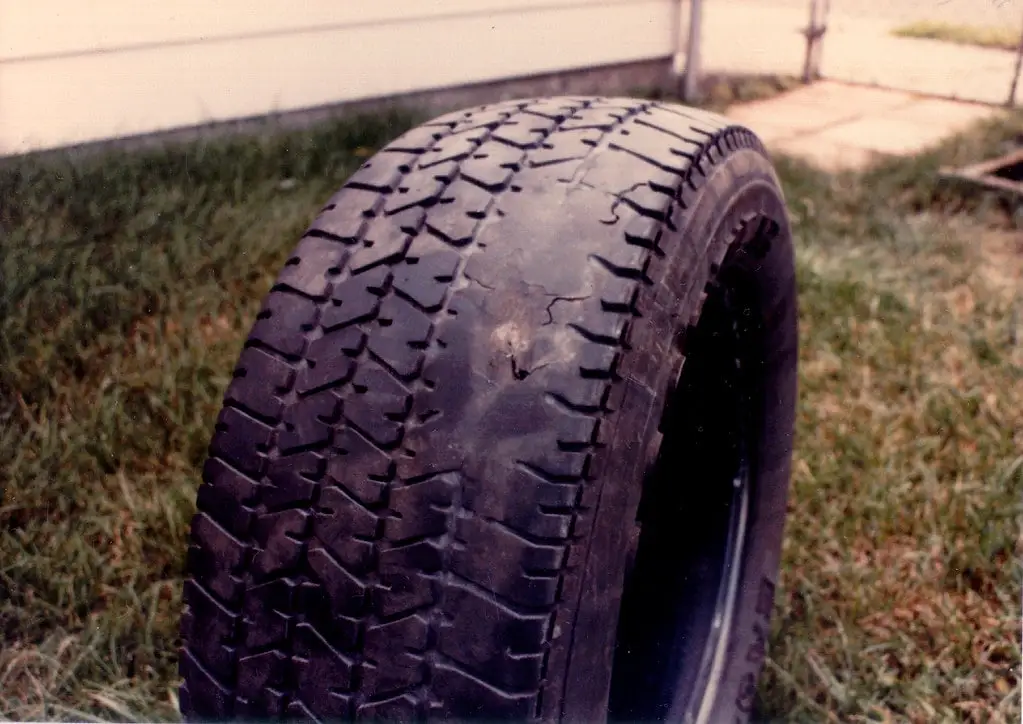Has your smooth highway cruise turned into a bouncy rodeo ride? Do you feel every pebble and pothole through the steering wheel? Your front shocks may be screaming for help.
These unsung suspension heroes take a beating to give you a comfy and controlled ride. Let’s look at what shocks do, so you can recognize when yours have called it quits & Signs Your Car Has Bad Front Shocks.
What Do Shocks Do, Anyway?
Shocks are like a partially filled bottle. As the suspension moves up and down, fluid flows through tiny holes inside the shock body, giving resistance that damps spring and suspension movement.
Without good shocks, your wheels clatter up and down, bouncing several times after hitting bumps and dips. This leads to a rough ride and loss of control in emergency maneuvers.
Shocks also help:
- Keep the tires glued to the road over bumps
- Prevent excess body roll and weight transfer in turns
- Reduce front-end dive under braking
- Control rear squat under acceleration
Signs Your Car Has Bad Front Shocks. When shocks no longer damp properly, you feel it through the steering wheel and seat. Let’s look at 10 symptoms that screamed at these shocked owners: their front shocks were dying.
1. Excessive Bouncing After Bumps
Signs Your Car Has Bad Front Shocks. Hitting bumps and dips causes the suspension to oscillate vertically. Good shocks quickly dampen this movement. When shocks wear out, your wheels bounce up and down for an uncomfortably long time after bumps.
“It was like a bucking bronco after I hit potholes,” said one former shock denier. “I kept meaning to get it checked until one particularly nasty series of bumps nearly shook the fillings out of my teeth!”
2. Nose Dive When Braking
Healthy shocks keep the front end planted by controlling weight transfer under braking. As shocks wear, the front end dips dramatically under hard braking, reducing handling and control.
“When I slammed on the brakes for a light, it was like the front slapped down and stayed there,” reported one nose-diving driver. “It was very disconcerting not being able to steer or stop like normal.”
3. Excessive Body Roll in Corners
Good shocks reduce body lean and weight transfer when cornering, helping to keep the tires glued for sharper handling.
Bad shocks allow pronounced side-to-side rocking, making it hard to control the vehicle in turns.
“It was like trying to whisk pancake batter every time I turned,” described one driver. “I had to take corners extra slowly or risk flipping the whole bowl over!”
4. Hard Steering Over Small Bumps
Signs Your Car Has Bad Front Shocks. Worn shocks transmit small road inputs directly to the steering wheel. This makes the wheel dart and tug with every minor pavement ripple.
“My steering wheel was constantly jerking and twitching,” said one shocked wheel wrestler. “Driving on the highway was like riding a bull named Knuckles McFlintstone. My hands were beaten after 10 minutes on the road.”
5. Vague Steering Feel and Reduced Grip
Since shocks keep the tires planted on the pavement, worn units reduce grip and make the steering vague and rubbery. This is especially apparent in emergency maneuvers.
“When a deer jumped out, I yanked the wheel hard to swerve,” one driver recalled. “But it was like stirring molasses. I didn’t know if the tires would grab or just slide off the road.”
6. Odd Noises Over Bumps
When shocks bottom out, you may hear a metallic “think” or knocking noise from the suspension components slamming together.
“It was making ‘boing’ and ‘sproing’ sounds like I was driving a cartoon car,” said one shocked driver. “I kept waiting for the wheels to pop off or smoke to shoot out the tailpipe!”
7. Reduced Traction and Braking Power
Signs Your Car Has Bad Front Shocks. Shocks keep the tires planted firmly on terra firma for maximum grip. So bad shocks mean less traction for turning, accelerating, and stopping.
“I’d hit the gas to merge, but got wheel spin like it was on the ice,” reported a driver struggling for the stick. “And the brakes took forever to slow down, even for a yellow light.”
8. Rapid Inner Tire Wear
Excessive bouncing can cause tire cupping, a scalloped wear pattern with raised edges around the tread. This leads to vibration and impacts ride quality.
“I kept getting this herky-jerky shake through the wheel above 60 mph,” said one tire trauma victim. “When I got new tires, the mechanic said my inner treads were worn bare because of the bad shocks.”

9. Vehicle Squats Too Far Rearward Under Acceleration
Signs Your Car Has Bad Front Shocks. Worn shocks allow excessive rear suspension compression under hard acceleration, lowering the back end significantly. This shifts weight rearward, reducing front grip.
“It was ridiculous how much the back end squatted when I hit the gas,” reported one launched driver. “With how low the rear got, I could’ve dragged a sparking tailpipe if I wasn’t careful.”
10. Fluid Leaking From the Shaft Seals
If you see drips of oil, smears of grease, or wetness around the shock seals, the internal seals may be cracked or split. This allows fluid to leak out rather than work inside the cylinder.
“I kept getting mystery spots of oil in the garage, with no idea where they came from,” said one leaky suspension sleuth. “Finally I saw drips right below the front shocks after a drive – mystery solved!”
FAQ: Signs Your Car Has Bad Front Shocks
Still unsure if your front shocks have shuffled off? Here are answers to frequent questions about symptoms of failing front shocks:
How Do I Know If My Front Shocks Are Bad?
The top signs are excessive bounce after bumps, front end dive under braking, body roll in turns, vibration through the steering wheel, odd noises from suspension, reduced traction and braking grip, and fluid leaks near shaft seals.
How Do I Know When to Replace My Front Shocks?
Experts recommend inspecting shocks and struts every 30k miles or 2 years. But it’s smart to get them checked anytime you feel the new ride, handling, or vibration issues, hear odd noises over bumps, or notice fluid leaks around shafts.
What Do Bad Front Shocks Sound Like?
The most common sounds from worn front shocks are metallic knocking or harsh “thanks” when bottomed out over large bumps, and sproingy “boing boing” noises from excessive suspension movement after hits.
What Does it Feel Like When Front Struts Are Bad?
With bad front struts, you’ll feel excessive vibration and front end shake through the steering wheel, especially over small bumps. Hard steering, loss of grip, body roll in turns, and dramatic front-end dive under heavy braking are other clues.
How Do You Test Front Shocks?
The simplest at-home check is to push down firmly on each corner of the bumper, then quickly release. If the vehicle bounces more than 1-2 times before settling, the shocks are wearing out. But professional testing by a mechanic is best.
Do Front Shocks Make Noise?
Advanced wear lets suspension components knock together, creating noises when bottomed out over bumps. But most worn shock noises come from undamped spring oscillations after hits making “boing boing” and sproingy sounds.
Fix the Bucking Bronco: Time For New Front Shocks!
Signs Your Car Has Bad Front Shocks. If you’re experiencing any of these clunking, bouncing bronco rides, it’s time to wrangle those worn front shocks. Expert technicians can evaluate if shock or strut replacement is best for your car and driving needs.

